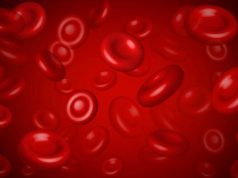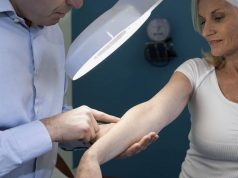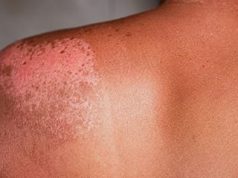The American Academy of Dermatology
The annual meeting of the American Academy of Dermatology was held from March 3 to 7 in Orlando, Fla., and attracted more than 15,000 participants from around the world, including clinicians, academicians, allied health professionals, and others interested in dermatology. The conference highlighted recent advances in the diagnosis and management of dermatological conditions.
During one presentation, Brett King, M.D., M.P.H., of the Yale School of Medicine in New Haven, Conn., discussed the use of Janus kinase (JAK) inhibitors for the treatment of alopecia areata, atopic dermatitis, and vitiligo.
“Treatment of these conditions with the JAK inhibitors tofacitinib and ruxolitinib — approved by the U.S. Food and Drug Administration for rheumatoid arthritis and myelofibrosis, respectively — effectively reverses these diseases,” King said. “JAK inhibitors have the potential to revolutionize dermatology, in particular to make possible the treatment of three devastating and common skin diseases, for which successful treatment has been elusive until the past two years.”
During another presentation, Maritza I. Perez, M.D., of the Icahn School of Medicine at Mount Sinai in New York City, educated physicians who are taking care of Hispanic patients with skin cancer in the United States.
“In the past two decades the incidence of malignant melanoma in Hispanics has increased by 20 percent,” Perez said. “Hispanics are often not informed about their skin cancer risk. Since 15 percent of Hispanics don’t have medical coverage and don’t seek medical care, we end up with a population that develops skin cancer at a younger age, at a more advanced stage, and with higher mortality rates.”
Perez recommends providing proper education on the skin of Hispanics to dermatologists everywhere, educating Hispanics on their propensity for skin cancer and how to prevent it, and encouraging dermatologists to evaluate Hispanics — either in the clinic or via teledermatology — for skin cancer.
As part of the American Academy of Dermatology’s SPOTme program, Hensin Tsao, M.D., Ph.D., of Harvard Medical School in Boston, and colleagues assessed data from 118,085 individuals who received free skin cancer screening between 2009 and 2010. The investigators found that one-third of patients had observed a change in the size, shape, or color of a skin lesion. The researchers noticed that patients are being more proactive about paying attention to changes; however, they do not appear to be taking precautionary measures.
“There appears to be a new surge in melanoma in situ,” Tsao said. “It remains to be determined whether this reflects new biology or earlier detection.”
The SPOTme program has also identified factors tied to suspicious lesions, including high count, history of melanoma, darker skin, and female gender. It is also known that white men over the age of 50 are at highest risk for developing melanoma. The investigators also found that not having insurance was a risk factor for the development of melanoma.
“This highlights the valuable service that the American Academy of Dermatology provides with its SPOTme program,” Tsao said in a statement. “For some patients, these free screenings can be life-saving.”
The SPOTme skin cancer screening program is supported by a grant from Bristol-Myers Squibb.
Copyright © 2017 HealthDay. All rights reserved.







